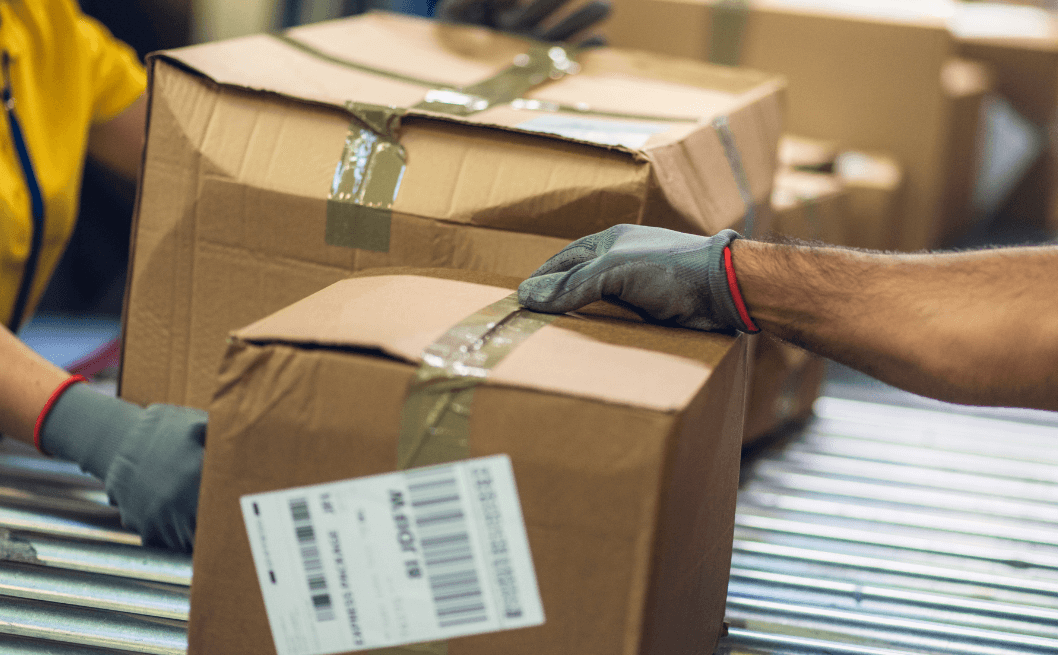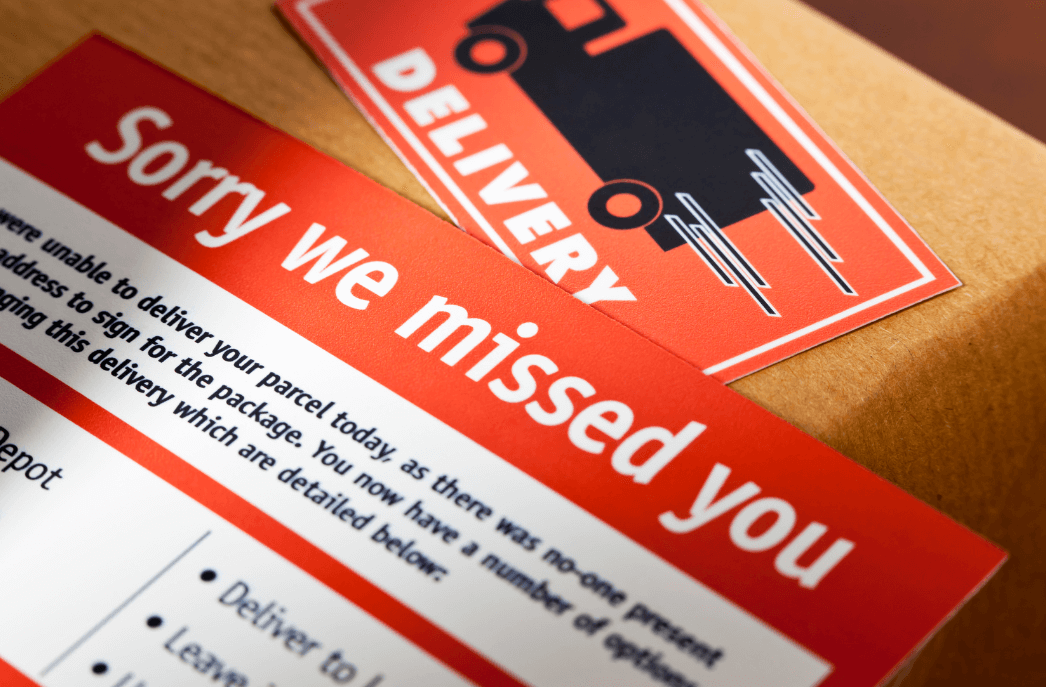In today’s digital age, ecommerce has become an integral part of the retail landscape, offering convenience and accessibility to consumers worldwide. However, with the rise of online shopping comes the challenge of delivering products successfully to customers.
Failed deliveries, where packages are not delivered as intended, pose high costs to ecommerce businesses. This article aims to shed light on the true costs of failed deliveries, exploring both the direct and indirect impacts on businesses. By understanding these costs, ecommerce companies can take proactive measures to mitigate risks and enhance their delivery processes.
What is a Failed Delivery?
In the context of ecommerce, a failed delivery refers to a situation where a package fails to reach its intended recipient. Several factors can contribute to failed deliveries, including incorrect addresses, customers not being available during delivery attempts and logistical issues during shipping. These failures can have far-reaching consequences for businesses, both in terms of immediate costs and long-term implications.
When a package fails to reach its intended recipient, the costs associated with this failure can add up quickly. Beyond the loss of revenue due to product returns or lost orders, businesses also incur additional expenses related to re-shipping and customer service inquiries. Furthermore, customers may become dissatisfied with their experience, leading to lower customer satisfaction scores and decreased repeat business.
Businesses must understand their true delivery failure costs to better plan and minimize related losses. This could include assessing external factors or internal processes contributing to delivery failures, such as expanding carrier coverage or developing a more efficient fulfillment process.
Common Reasons for Failed Deliveries
Incorrect addresses are one of the primary causes of failed deliveries. Whether due to typographical errors during order placement or outdated customer information, inaccurate addresses lead to undeliverable packages.

Failed deliveries could occur when customers are not present at the provided address during delivery attempts or fail to arrange alternative delivery options. Furthermore, logistical issues such as mishandling, misrouting, or delays in transit can also contribute to failed deliveries. Some of the top reasons for failed deliveries include:
- Incorrect or Incomplete Address: One of the primary causes of failed deliveries is an incorrect or incomplete address provided by the customer during the ordering process. Typos, missing apartment numbers, or outdated address information can lead to undeliverable packages.
- Address Confirmation Issues: In some cases, the address provided by the customer may require confirmation or verification from the carrier. The delivery may be marked as failed if the carrier fails to reach the customer or receives the necessary confirmation.
- Damaged or Lost Packages: Occasionally, packages can get damaged or lost during transit, leading to failed deliveries. This could happen due to mishandling, accidents, or theft, and such situations often require the package to be returned to the sender or reshipped to the customer.
- Weather Conditions: Severe weather conditions, such as storms, hurricanes, or heavy snowfall, can disrupt transportation and logistics networks. In these cases, delivery services may be temporarily suspended or delayed, resulting in failed deliveries.
- Customs Clearance Issues: Customs clearance is a crucial step for international shipments. If there are complications during the customs clearance process, such as missing or incomplete documentation, the package may not be delivered to the customer as intended.
- Logistics and Operational Challenges: Complex supply chains, high order volumes, or inadequate infrastructure can lead to logistical challenges and operational inefficiencies. These issues can result in delayed or failed deliveries, especially during peak seasons or periods of increased demand.
- Product Restrictions or Prohibited Items: Some products or items may be subject to restrictions or prohibitions by local regulations or carrier policies. A package containing such items may be flagged and refused for delivery, resulting in a failed delivery.
The industry’s top carriers provide resources to help prevent failed deliveries by verifying addresses, attempting to contact customers if they are not available during delivery attempts, and even offering alternative delivery methods. However, when a package is deemed undeliverable, there are still costs associated with it. Companies must weigh the cost of these resources against the risk of additional failed delivery fees that may
When a business encounters an undeliverable package, the failed delivery doesn’t just cost money—it can also impact its reputation. Customers who have to wait or contact customer service for a resolution may be displeased with the customer experience and leave negative feedback that will discourage future customers from doing business with you.
The Direct Costs of Failed Deliveries
Failed deliveries incur immediate costs for ecommerce businesses, known as direct costs. Direct costs refer to expenses that have a direct and immediate financial impact, such as return shipping fees, re-shipment fees, and fines for unsuccessful deliveries. Other indirect costs, like the time spent on customer service or resolving order delays, can also accumulate quickly. Additionally, expenses such as raw materials, machinery required for production or delivery, packaging, shipping, and sales commissions are also considered in determining costs. Some of the most significant direct costs include:
- Transportation Costs: Retailers typically bear the transportation costs for failed deliveries. This includes expenses related to shipping the products from the warehouse or distribution center to the customer’s location and any return shipping costs incurred when the delivery fails.
- Redelivery Costs: If a delivery attempt fails, the retailer may need to make arrangements for redelivery. This can involve additional transportation costs, such as rescheduling the delivery with a logistics provider or dispatching a delivery agent again.
- Inventory Costs: Failed deliveries can result in products being returned to the retailer’s inventory. This may lead to increased inventory carrying costs, such as storage fees, depreciation, and the potential for product obsolescence or damage.
- Refunds and Replacements: In cases where a delivery fails, and the customer does not want a redelivery, the retailer may need to issue a refund or provide a replacement product. These costs can include the price of the product itself, as well as any associated shipping or handling expenses.
- Administrative Costs: Failed deliveries require administrative tasks such as updating delivery records, processing returns, and coordinating with logistics partners. These administrative activities may incur direct costs in terms of labor, software systems, and other related expenses.
Starbucks Case Study: Direct Costs of Failed Deliveries
Starbucks, a widely recognized brand, faced supply chain challenges during 2007 and 2008, resulting in failed deliveries. The company’s leadership became concerned about its ability to supply 16,700 outlets.
When the supply chain executive team investigated the performance issues, they discovered several problems affecting service levels. Less than 50% of outlet deliveries arrived on time, poor outsourcing decisions had led to excessive expenses with third-party logistics providers, and the supply chain had become unnecessarily complex due to an evolutionary rather than planned growth approach.
To address these challenges and achieve better performance and cost reduction, Starbucks established three primary objectives. The company divided all supply chain functions into three distinct groups, namely “plan,” “make,” and “deliver.” This restructuring aimed to streamline operations and improve coordination.
Starbucks sought to identify opportunities for cost reduction within the supply chain, particularly concerning logistics and delivery expenses. This involved assessing and optimizing various aspects of the supply chain process. By pursuing these objectives, Starbucks aimed to improve supply chain performance, reduce direct costs like freight charges, and reduce long-term costs associated with failed deliveries.
The Indirect Costs of Failed Deliveries
Failed deliveries have hidden or indirect costs that can have long-lasting effects on ecommerce businesses. Indirect costs refer to the expenses of running and maintaining a company, which go beyond the costs incurred in producing a product. Unlike direct costs that can be easily allocated to a particular product or service, indirect costs are more generalized and contribute to the company’s overall operation. Here are some common examples of indirect costs:
- Rent and Utilities: The cost of renting or leasing office space, factories, or warehouses, as well as expenses for electricity, water, heating, and other utilities.
- Administrative Salaries: Salaries and benefits for employees in administrative roles, such as executives, managers, human resources personnel, and accounting staff.
- Marketing and Advertising: Costs associated with marketing campaigns, advertising materials, website maintenance, social media management, and public relations activities.
- Insurance: Premiums paid for business insurance coverage, including property insurance, liability insurance, workers’ compensation insurance, and other forms of coverage.
- Legal and Professional Fees: Fees paid to lawyers, accountants, consultants, and other professionals for legal advice, tax preparation, auditing, and business consulting.
- Training and Development: Costs associated with employee training programs, seminars, workshops, and professional development initiatives.
- Indirect Taxes and Licenses: Taxes and fees paid to regulatory authorities or government agencies, such as business licenses, permits, property, and sales taxes.
Indirect costs are essential for a business’s overall operation and management but may not be directly attributable to specific products or services. They are typically allocated and spread across various departments or cost centers based on predetermined allocation methods.
Terex Case Study: Indirect Costs of Failed Deliveries
Terex Corporation, headquartered in Westport, Connecticut, manufactures aerial working platforms. Their products are often rented by companies and dispatched from their North Bend, Washington, transfer center. However, Terex faced challenges related to indirect costs associated with failed or slow delivery.
The primary challenge was the manual yard management system at the transfer center. The existing low-tech solution of wallboards and stickers used to identify equipment items in the yard proved inefficient and costly. Each time an employee had to locate a unit, it took approximately six minutes, resulting in unnecessary time and labor expenses. Additionally, regular physical inventories and manual updates in the company’s ERP platform added further administrative burden.
Terex implemented a new digital solution using RFID tracking to address these issues and reduce indirect costs. They opted for a yard management software (YMS) product and surveyed the transfer center before initiating a pilot project for a specific section of the yard.
Following a successful pilot, Terex approved the full-scale implementation of the digital solution. The outdated stickers, yard maps, and wallboards were replaced with electronic tracking and digital inventory management. Future plans included integrating the yard management solution with their ERP platform to unlock additional functionality.
By adopting the new system, Terex aimed to streamline yard management processes, reduce the time and labor associated with locating units, and eliminate the need for manual inventory updates. These improvements in indirect costs would contribute to overall supply chain cost reduction and enhance operational efficiency at the transfer center.
The Impact of Failed Deliveries on Customer Lifetime Value (CLV)
Failed deliveries can profoundly impact Customer Lifetime Value (CLV), a crucial metric for evaluating the long-term profitability of a business. Customer Lifetime Value is the total net profits a single customer generates throughout their relationship with your company. When deliveries fail, customers may cancel orders or encounter other issues, leading to reduced loyalty and decreased CLV.
Even if failed orders are eventually delivered successfully, and the customer is satisfied, there is still a significant cost associated with resolving problems caused by late delivery. When customers have negative experiences with failed deliveries, their trust in the brand diminishes, decreasing the likelihood of repeat purchases.
Moreover, dissatisfied customers are more likely to explore alternative options, potentially switching to competitors who can provide reliable and timely deliveries. As a result, the CLV of customers who have experienced failed deliveries is significantly lower compared to those who have not encountered such issues.
Calculating the True Cost of Failed Deliveries
According to PCA Predict’s research, over 65% of businesses experience significant costs due to failed and late deliveries, and to accurately assess these costs, businesses should take into account both direct and indirect consequences, along with the impact on customer lifetime value. To calculate the actual expenses, businesses must measure the immediate costs of failed deliveries, such as added shipping fees, handling expenses, and returns processing.
Additionally, it requires assessing the intangible costs, including the negative impact on customer satisfaction, brand reputation, and customer loyalty. Some factors to consider when calculating the true cost of failed deliveries include the following:
- Increased Customer Acquisition Cost: Customers who have a bad delivery experience are more likely to switch to competitors. This means that businesses need to invest more in customer acquisition activities, such as promotions and advertising campaigns.
- Damage to Brand Reputation: When customers have a poor delivery experience, it can quickly spread through review sites and social media channels. This can lead to reputational damage that takes considerable time and resources to repair.
- Higher Customer Service Costs: As customer expectations increase, so does the cost of customer service, either through contact center operations or online support. It can be more expensive to manage customer complaints than it is to process successful orders and deliveries.
- Increased Risk of Returns: Poor delivery experiences usually result in an increased rate of returns as customers complain about product damage or incorrect items sent. This increases the operational costs associated with returns management and inventory accuracy.
Strategies to Reduce Failed Deliveries
While completely eliminating failed deliveries may be impossible, ecommerce businesses can adopt strategies to minimize their occurrence. Improving address validation processes during order placement and fulfillment can help reduce incorrect address issues.
Providing customers with flexible delivery options, such as alternate delivery addresses or time slots, can mitigate the problem of customers not being available. Enhancing communication with customers, including proactive notifications and tracking updates, fosters transparency and reduces uncertainty.
Leveraging Technology to Minimize Failed Deliveries
Advanced technologies and software solutions offer significant potential in minimizing failed deliveries. Implementing robust address validation systems that automatically verify and correct customer addresses can greatly reduce the occurrence of incorrect addresses.
Utilizing route optimization software can help optimize delivery routes, reducing logistical issues and transit delays. Additionally, real-time tracking and delivery notifications give customers visibility into their shipments, enabling them to plan and ensure their availability during delivery attempts.
Final Thoughts
The true costs of failed deliveries extend far beyond the immediate expenses of reshipping or handling returns. Ecommerce businesses must consider the direct costs, the negative impact on customer satisfaction and brand reputation, and the potential loss in CLV.
By recognizing the true costs, businesses can implement strategies to reduce failed deliveries, including improving address validation, offering flexible delivery options, and leveraging advanced technologies. Addressing and mitigating failed deliveries is essential for ecommerce businesses to thrive in a competitive landscape and build long-term customer relationships based on trust and reliability.



